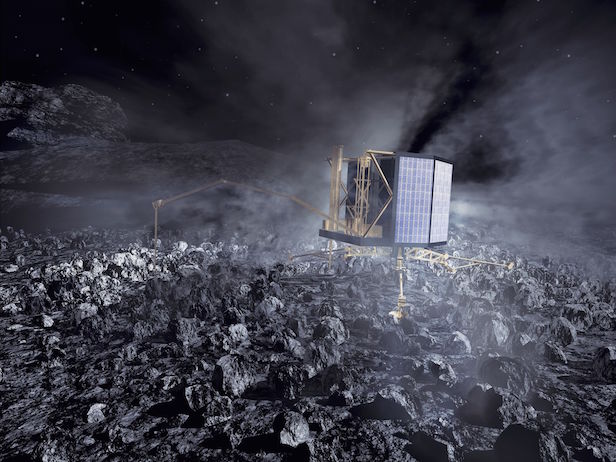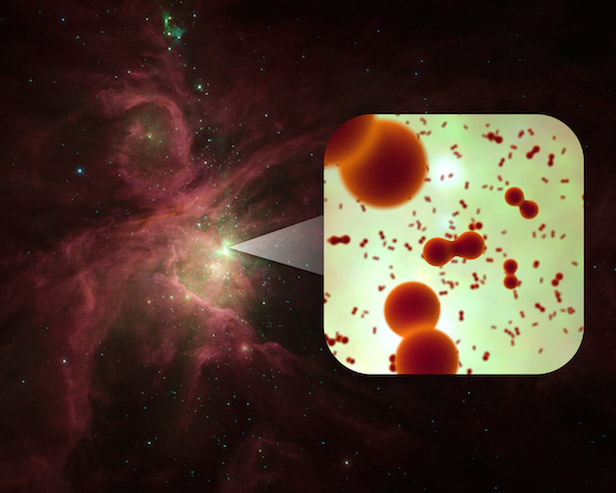Rosetta’s comet produces breathable oxygen
A Caltech scientist has just figured out how gaseous oxygen is produced on Comet 67P, based on data collected by Rosetta’s Philae lander in 2014

An artist’s impression of the Philae lander on the surface of Comet 67P. Image credit: ESA/AOES Medialab
Molecular oxygen is vital for us to breathe, but is scarcely found in the depths of space, in fact it was first detected in space in 2011! Fast-forward to 2015, and scientists detected molecular oxygen on the comet 67P/Churyumov-Gerasimenko. Now the Caltech chemical engineer, Konstantinos P. Giapis, explains how the molecular oxygen has come to exist on such a mysterious object.
On 12 November 2014, The Philae Lander detached from Rosetta and landed (twice) upon 67P and began very rare analysis of the comet. One of the most head scratching discoveries from this research was when scientists in 2015 declared there is molecular oxygen in the extremely thin atmosphere of 67P. What made this a puzzling discovery is that the molecule we breathe is rarely found in interstellar space.
It was originally theorised that the oxygen had been frozen at the dawn of the solar system, but when the comet is heated, the oxygen would be released into the atmosphere of 67P. However, questions were raised about this scenario, because other scientists have claimed the oxygen should have previously reacted with other chemicals, meaning no molecular oxygen could be created.

One of the rare islands of molecular oxygen is in star forming regions. Image credit: ESA/NASA/JPL-Caltech
Konstantinos P. Giapis of Caltech has been studying chemical reactions involving high-speed charged atoms (or ions) colliding with semi-conducting surfaces for 20 years now, the aim of his work is to create faster computer chips and larger digital memories for modern technologies. However, he noticed similarities between his work and the oxygen dilemma present on 67P, and he might have solved the puzzle.
Giapis and postdoctoral scholar Yuanxi Yao, show that the comet is producing the oxygen, opposed to haven already produced it. When the water molecules within the comet get heated up by the Sun, they leave the comets surface and then immediately bombarded by the Sun’s ultraviolet radiation, leaving it ionised. As the solar winds blow the ionised water molecules around, they collide with the rust and sand on the comet’s surface, which also contain oxygen. This collision causes an ionised molecule to pinch another oxygen creating the molecular oxygen we see today.
This process may influence scientists in the search for life beyond our world, as this shows that breathable oxygen can be produced in a organic manner, which requires doesn’t require human or plant life.
Keep up to date with the latest space news in All About Space – available every month for just £4.99. Alternatively you can subscribe here for a fraction of the price!




